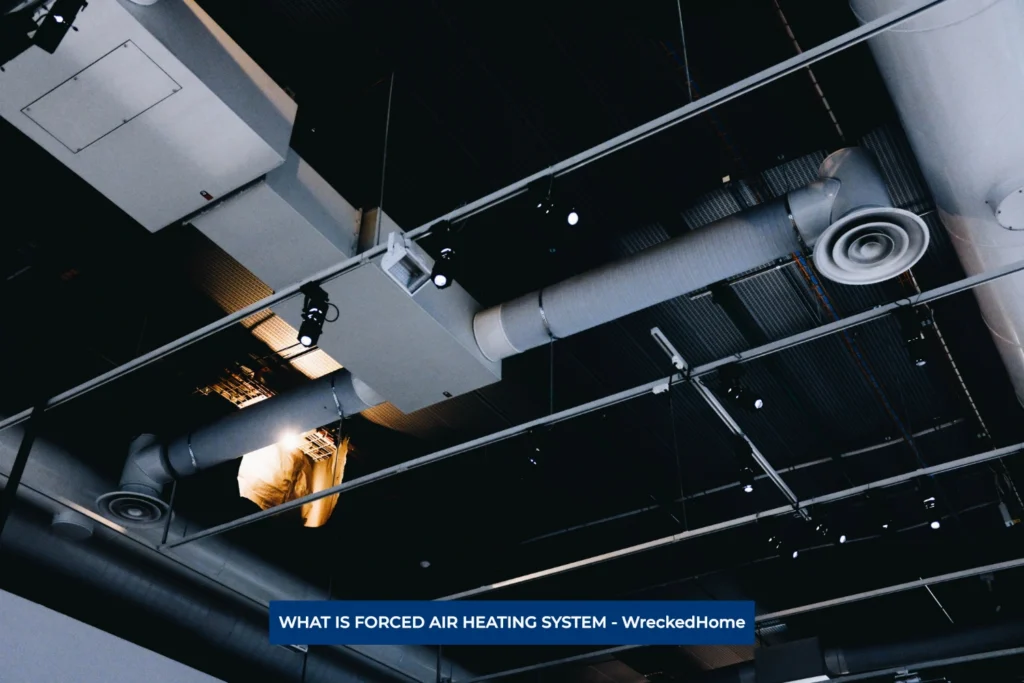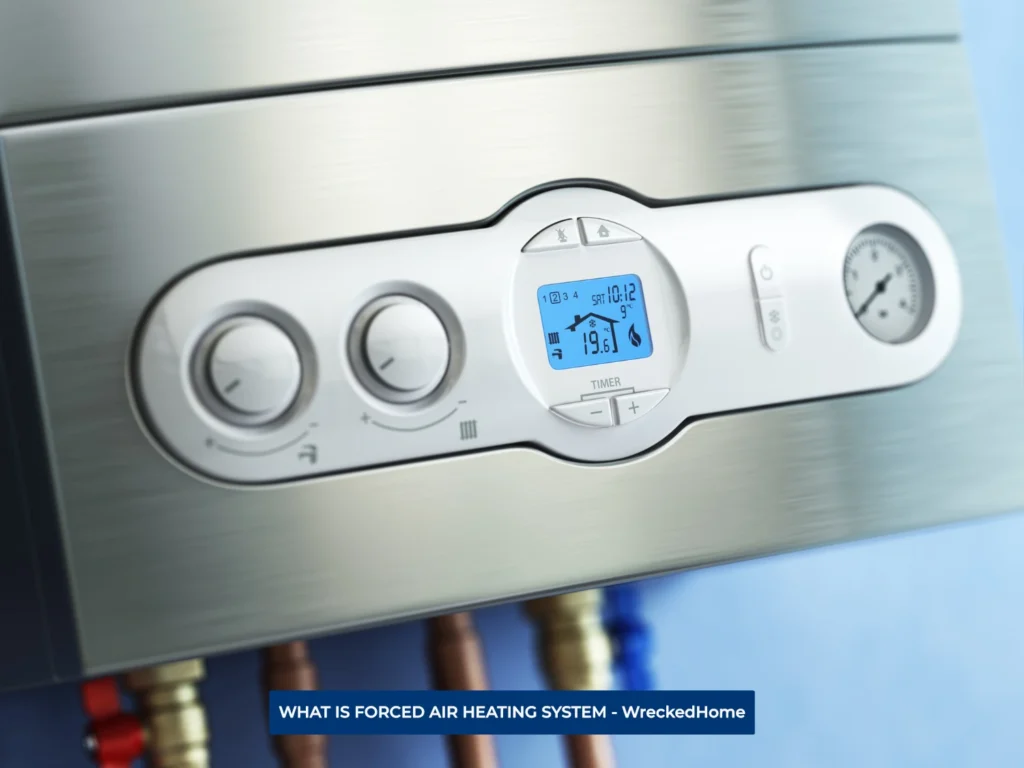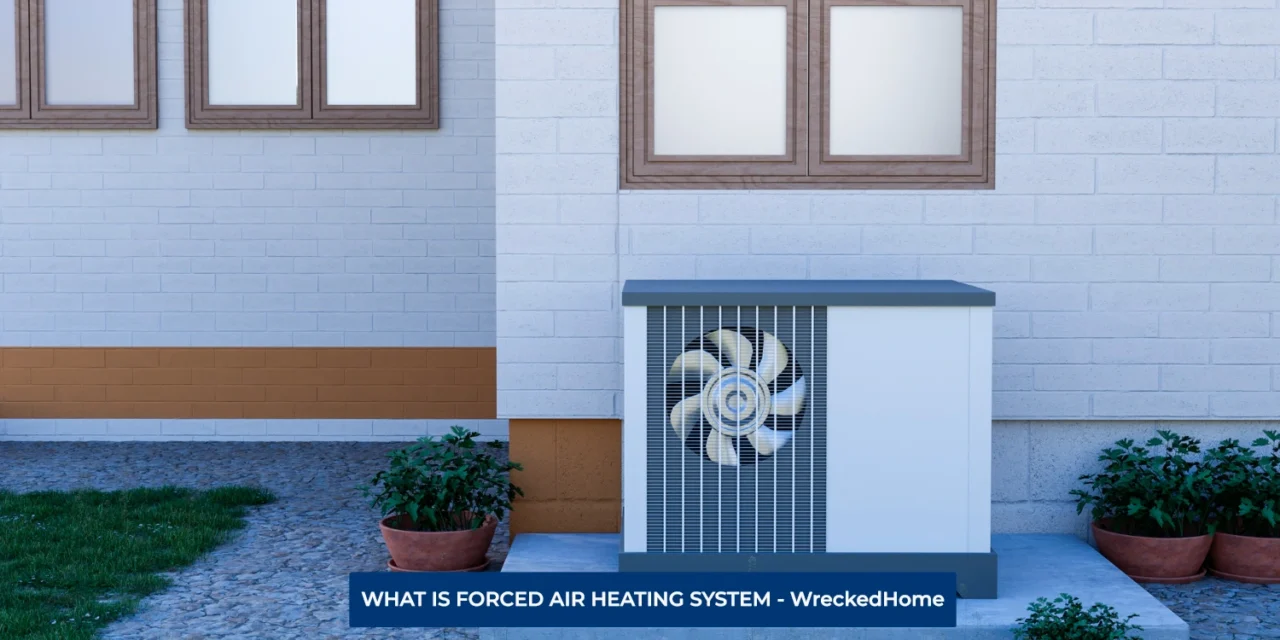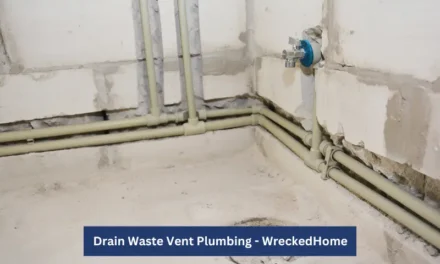What is Forced Air Heating System?
Forced air heating is a form heating, ventilating and air-conditioning system (HVAC system). This system employs a potent source of heat to manipulate the volume or temperature of air. Then this air is propelled throughout the house using air ducts and vents using a powerful fan.
This system might sound new, but it has been there since the early 1930’s. Although there have been many innovations, yet the central idea remains the same.
Forced air heating system is often confused with central air, which will be thoroughly explained further in the article.
- What is Forced Air Heating System?
- Types of distribution systems
- Components of Forced Air System:
- How does Forced Air Heating Work?
- What is Forced Air Heating: Maintenance
- PROS AND CONS OF HAVING FORCED AIR HEATING SYSTEM
- Difference between Forced Air Heating and Central Air:
- How to find the best Forced Air Heating System?
- Frequently Asked Questions (FAQs):
- Conclusion:
Types of distribution systems

First, let us explore the numerous ways air is distributed in heating systems.
Following is a brief analysis of various distribution systems:
1. Forced Air Heating System:
It is the most common method of heat distribution that uses vents to distribute heat generated from a furnace.
PROS:
- Most common and reliable method
- Can be used for cooling as well
CONS:
- Can be a source for allergen distribution in the house
2. Radiant Heating:
This system can be installed either in the floor or ceiling of the room and distributes heat directly from the source to the surroundings.
PRO:
- It will not be a source of dust allergens in the house
CON:
- It is a relatively expensive system due to installation of ceramic tiles and coverings.
3. Hot Water Baseboards:
This system uses base board units mounted in the walls. Hot water in them is used to heat up a space.
PRO:
- Provides better temperature control
CON:
- Relatively slow method to increase temperature
4. Electric Baseboards
This type of heating system pulls cooler air to the bottom of the unit and releases air out from the top through electrical heating.
PRO:
- Low maintenance
CON:
- Limits placement of furniture
- Can be damaged easily
Learn about modern plumbing if you are facing any issues with the water systems in your house.
Components of Forced Air System:

Knowing the components of a forced air system will help you understand better how it works.
It consists of:
• Thermostat which detects the temperature
• Heat source which consists of a furnace. Furnace can be of 2 types:
. 1. Gas furnace: It uses fuel to produce heat
2. Electric furnace: It uses various heating elements comparable to those in electric stoves.
• Supply duct to distribute air in the house
• Return duct for suction and recycling of used air
• Blower fan to propel air into the ducts
• Safety switches for proper functioning of the system. They will alarm you in case of any emergency situation.
• Internal duct fans to assist the blower fan in propelling the air
How does Forced Air Heating Work?
After going through what a forced air heating system is, let us analyze how it works.
Forced air heating systems follows a particular operating sequence to heat up your home, the events of which are mentioned below:
- A thermostat detects the temperature. If it is not the desired one, it sends electrical signals to the furnace to start the heating mechanism.
- To ensure a protected startup, the furnace performs safety checks before initiating the process.
- An inducer motor is started to expend any left-over gasses from the previous cycle, if any.
- After all the security checks, the heat source is ignited. Heat source can be powered by gas or electricity.
- Air is heated by the heat source and forced in the ducts for distribution.
- The forced air from the house is replaced by fresh air pulled by suction ducts.
- When the desired temperature is achieved, the thermostat signals the system to shut down until the next stimulus.
In this way, air from within the house is suctioned out and fresh air from outside is heated and distributed evenly inside.
Step out into fresh air in your very own backyard pavilion!
What is Forced Air Heating: Maintenance
It is essential to take good care of your heating system to ensure its maximum efficiency.
Follow these steps for better quality heating system:
- Change the air filters frequently. This will ensure that no dust particles are entering the house through the vent system and will protect you from many diseases.
- Make sure none of the components of the system is obstructed with dirt.
- Have the system inspected by a professional annually.
- Keep the air ducts clean to prevent spread of air-borne diseases.
- Maintain carbon monoxide detectors to prevent any life-threatening situation such as suffocation.
Visit our store for 10% off our Save Home Energy products here.
PROS AND CONS OF HAVING FORCED AIR HEATING SYSTEM
PROS:
- The most important advantage of this system is simply that it is reliable and easy to install! The installation cost is low as compared to radiant heating.
- The system is easy to operate. Just set the thermostat to the required temperature and let the magic begin!
- It is highly efficient in heating the area.
CONS:
- Inconsistent heating can be a problem in large houses due to vast ducts.
- Air-borne diseases can be caused if good filters are not used and dust allergens can also enter the air.
- Carbon monoxide(CO) is produced by combustion. CO is a toxic gas which has higher tendency than oxygen to bind with hemoglobin, thus leading to suffocation.
- The maintenance cost of this system is high.
- This system uses centralized control. Only one temperature can be set at a time, and all the rooms in the house will be heated. Since not all rooms are being used, it will be a waste of electricity or fuel to propel heated air in the vacant spaces as well.
Attach covered patios to your house to enhance its outlook.
Difference between Forced Air Heating and Central Air:
Forced Air Heating system is a heating system that is used to control the temperature of a particular closed space. Whereas, central air refers to air-conditioning system. Both systems are equipped with ducts to distribute either warm or cool air.
The two work with almost the same components but serve different functions.
How to find the best Forced Air Heating System?
To ensure that you are making the right choice while installing this heating system in your house, keep in mind the following tips:
1. Correct type of fuel:
Fuel is the backbone of any heating system. Choosing the right type of fuel is essential for optimum results.
There are 3 options to use as fuel:
- Gas
- Electric
- Oil
Furnaces that use gas are the most efficient because it is relatively cheap and easily available. However, electric and oil-based furnaces are more efficient in heating your house.
2. AFEU Rating:
AFEU, or the Annual Fuel Utilization Efficiency, is a measure of the efficiency of your furnace.
For example, if the AFEU rating of a furnace is 90%, it means it converts 90% of the fuel into energy while the rest 10% is dissipated as heat.
Make sure the AFEU value of the fuel you are choosing is more than 80%.
3. Apt Size of Furnace:
It is very important to choose a furnace which is the right size for your house.
First, measure the footage of your house. Then determine the British Thermal Unit (BTU) value. BTU Is the measure of heat content of fuel and it depends on the area and the climate you are living in. Larger the house, more the fuel with higher BTUs will be required.
Frequently Asked Questions (FAQs):
1. Which is better Forced heat vs. Central Heat:
Although both practically produce the same result, there have some differences.
Forced heating system uses a furnace to heat the air whereas central heat uses a boiler for the same purpose.
Forced heat can be a potent cause of spreading allergens in the air. This risk is minimized in latter due to efficient filters.
Forced heat quickly heats the house as compared to central heat.
2. Is the fuel used for heating safe?
Yes! Propane is the most common fuel used for heating and it is completely non-toxic. It is a high-energy alternative, extremely versatile and also safe for the environment!
3. What is the best filter for Forced Air Heating system?
Filters play a crucial role in blocking allergens and dust particles from entering the air in the house.
Minimum efficiency reporting value (MERV) rating is used to check the potency of a filter. It is a measure of the size of particles that can pass through the filter. The ideal MERV value is 8-10. Any value higher than this will affect the efficiency of the furnace.
4. Which fuel is the most efficient?
Electric furnace uses electricity to heat up the air and is, by far, the most efficient method of warming up the air because it is easily accessible.
Next in the list are oil and gas, which are more economical but less efficient due to a number of by-products produced along their combustion.
5. How much does it cost to install a Forced Heating system?
The total cost of installing a forced air heating system depends on numerous factors such as the size of your house, the form of fuel being used in the furnace and the quality of equipment. It would be best to consult with HVAC workers for a close estimate of the cost.
Conclusion:
To conclude the article, we have learned what a forced air heating system is and how it works.
Its advantages overshadow its drawbacks, for it is essential to warm up your home with the best possible. It can be easily installed, is highly efficient and will be a great investment to ensure your comfort.
For any repairs, installations, builds, or questions; We recommend you to hire a professional. Find A Pro Near You Here!





































